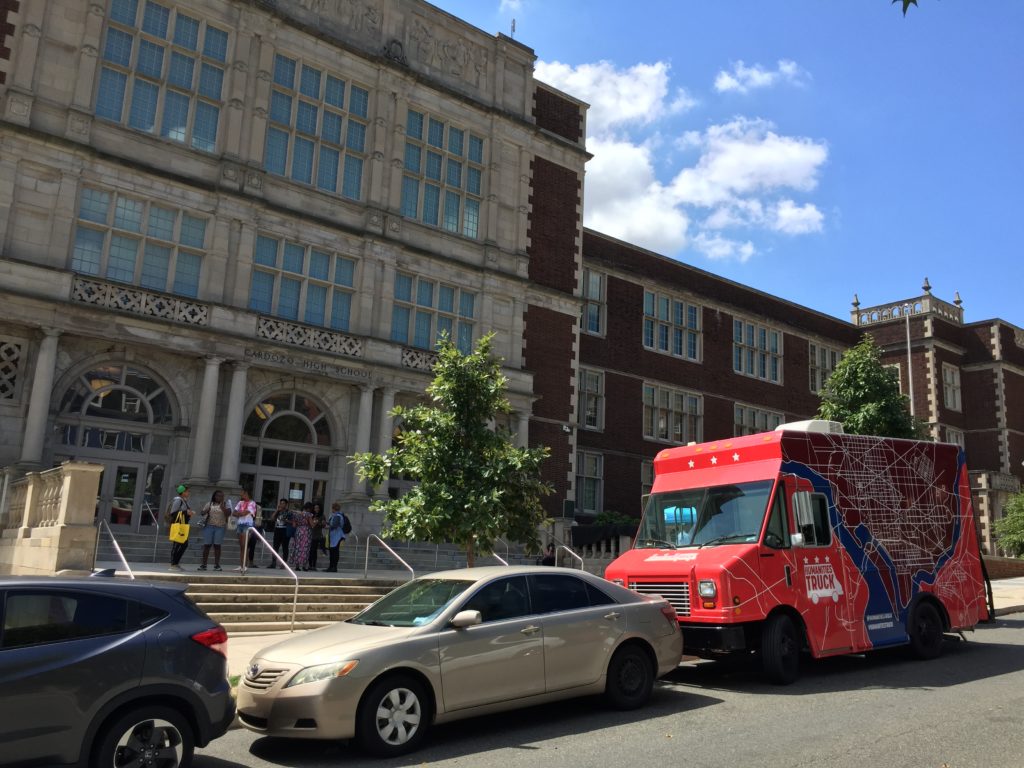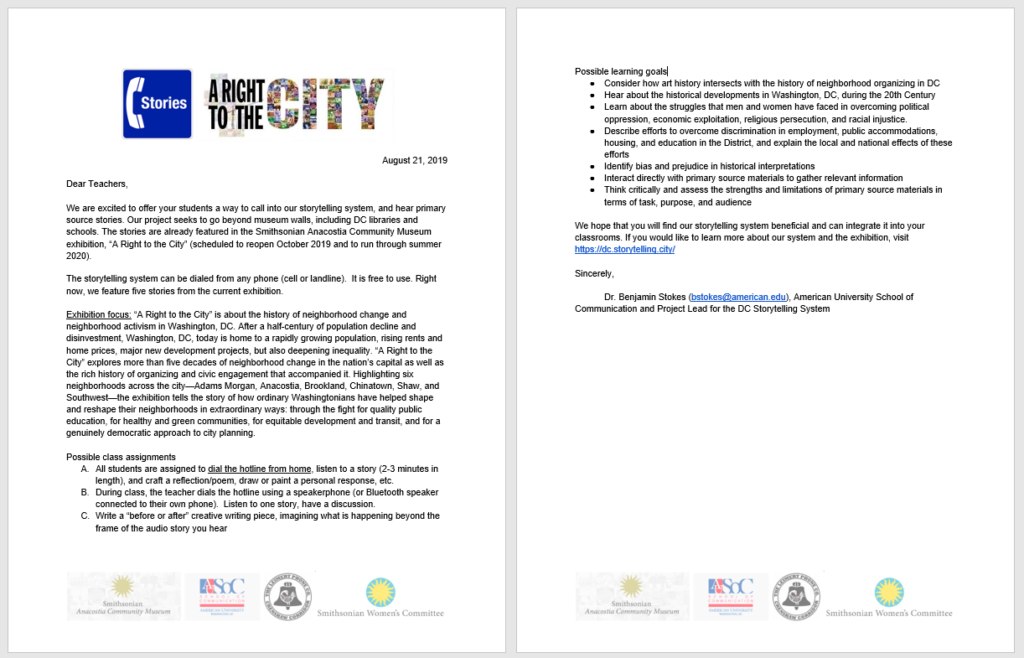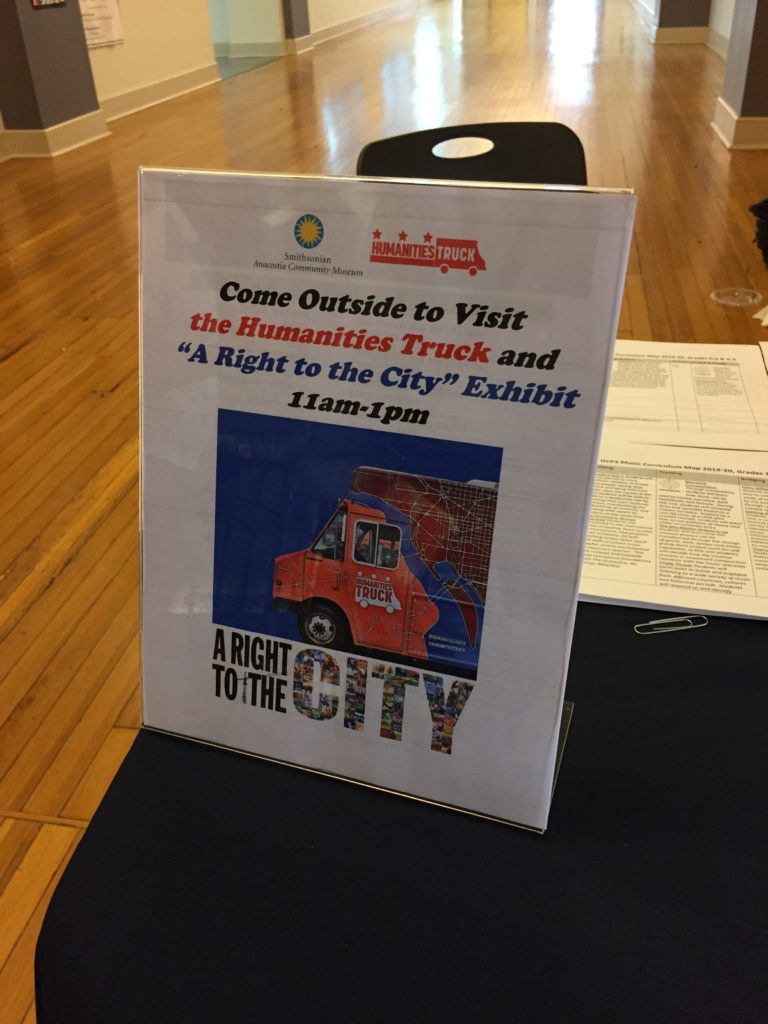Sometimes it’s not so hard. Sometimes an approach “for teachers” can be as simple as putting a rubber band around 20 cards…
One of our big ideas is that our system must be adaptive, and fit to the community in form and function. We have tested our storytelling system in a variety of different settings (from cafés to libraries to street festivals). In this post, we are going to look at how we positioned our storytelling system for DC high school teachers. This is the other half to success, since an adaptive system only helps if you take the time to position it.

Our approach is event-based (i.e., we resist the “anywhere, anytime” mantra as a false and unproductive hope for local organizing). In this case, we attended the DC Public Schools Development Day event hosted at Cardozo Education Campus. This event was primarily attended by high school teachers; they were open to applying alternate teaching methods and materials (such as our storytelling system).

Next, we modified our calling card design to be more applicable to a classroom setting. Unlike our normal cards, these only emphasize listening to our featured stories rather than sharing your own. We then pre-bundled the cards into packages of 20-30 cards so that teachers could easily grab enough cards for their entire class. We packaged our system in this way specifically to make it easier for teachers to use for provoking classroom discussions.

We also reframed our system’s potential impact around student learning by creating a learning goals handout. This document was based off the DCPS high school curriculum, specifically the Social Studies and the English Language learning standards. This helped to highlight to teachers the ways our system aligns with their needs and how they can utilize it on their own terms.
Finally, we chose to showcase ourselves in a way that set us apart from the other exhibitors at the event. Rather than tabling inside, we set up outside in front of the school with the Humanities Truck. This gave us more of a presence at the event, as well as gave us the space to set up additional materials such as phone installations and oral history recordings.
To summarize, here’s how we repositioned our system:
- Position within a specific event (e.g., DCPS Development Day);
- Position the materials for future action (e.g., card bundles that teachers were eager to take for future classroom use);
- Position and frame the outcomes in terms of student learning (not just community impact); and
- Position physically on our own terms (e.g., with the humanities truck outside, rather than the usual table inside), setting us apart from other presenters.
One lesson: our positioning was not just physical, but social, event-based and even about positioning the outcomes.
This post was contributed by Mitchell Loewen, a Game Design graduate student at American University, with feedback from the team at The Playful City Lab.

